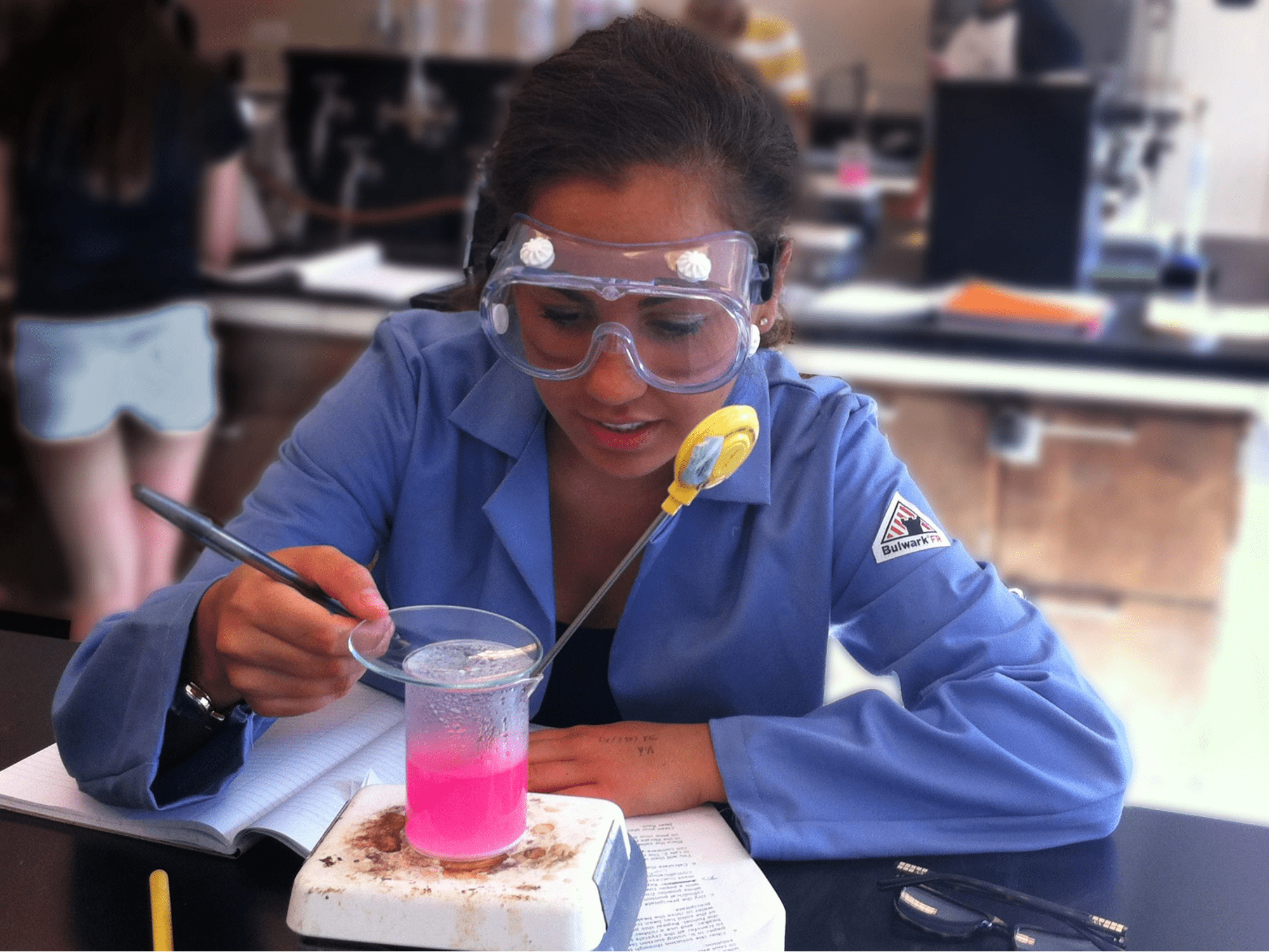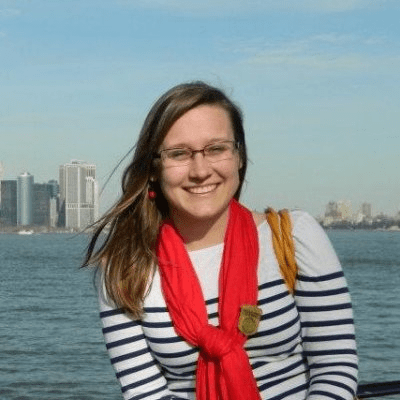Humor me for a moment: Close your eyes and imagine a scientist. Okay, now describe what you saw. If you're artistically inclined, maybe even sketch out what you imagined on a post-it note, coffee sleeve, or napkin.
With your physical sketch in hand and mental image at the front of your mind, ask yourself: Was my imagined scientist a woman? If so, that's awesome! If not, I cannot say I'm surprised.

Even though most life science graduate programs and biology classrooms are predominantly female, a disproportionate number of PhDs who remain in academia to become professors are male. This is what some refer to as the leaky pipeline. According to the US National Science Foundation, approximately 50% of the doctorates in science and engineering in the United States are earned by women, but only 21% of full science professors and 5% of full engineering professors are female. And yet, around the globe, 15-year-old girls generally outperform their male counterparts in science. So where are all these awesome female scientists going and why? Like most things in science – it's complex. One reason for this female flight from STEM fields is the harmful effect of both blatant and more subtle, unconscious biases that female scientists-in-training experience. My personal experience of having only men called on to ask questions after a seminar despite female hands being raised attest to this statement. For me personally, having female role models I admire helps combat these biases and continues to be crucial to my persistence in STEM.
To celebrate a couple of these STEMinists and to encourage all my fellow lady scientists out there, I'd like to bring a few of my favorite female scientists into the spotlight. These women and their stories of persistence in male-dominated fields inspire me and give me hope for a brighter, more female-led future.
Katherine Johnson
Does this name sound familiar to you? Taraji P. Henson recently portrayed Katherine Johnson in the film Hidden Figures, helping bring the work of many African American women at NASA during the Space Race into the spotlight.
After obtaining her bachelor's degree in mathematics, Katherine worked at NASA (and NACA, NASA's predecessor) from 1953 until she retired in 1986, making innumerable contributions to her field (while raising three girls, I might add!). Not only was she the first woman in the Space Flight Division to co-author a research report on the equations for orbital trajectory with a specified landing, but she used her math skills to perform trajectory analysis for America's first human spaceflight. Thanks to Mrs. Johnson calculations, John Glenn was safely returned back to Earth after being the first human to orbit our humble little planet. Katherine even ran all of the orbital trajectory equations by hand as a part of the preflight checklist for John's Friendship 7 mission. From where I'm standing, Katherine's life story embodies STEMinism.

My Mom
The name Karen Halmo may not sound as familiar as Katherine Johnson, and that's okay because Karen is my mom. She may not be famous worldwide, but my mom's life’s work significantly impacted my pursuit of a STEM career.
Similar to Katherine Johnson, my mom only stayed in graduate school for one semester. When my mother told her advisor that she was leaving her graduate studies in chemistry, he looked at her and said in his thick, German accent, “You would make a better hausfrau (housewife) anyway.â€
Despite this, my mom did not allow one man's rude remark to derail her. Once she left the unsupportive environment of her graduate school, she took a job as a finishing plant supervisor for a textile company and then as a quality control manager at a meatpacking plant which both utilized her dual degree in mathematics and chemistry. Aside from some time off to raise me and my sister (as a simultaneously damn good housewife and scientist), my mom continued to work in science putting her chemical knowledge and training to use at a USDA lab. At the USDA, my mom has worked to analyze pesticide residues in crops as a part of the Pesticide Data Program and also works to ensure the lab meets their ISO accreditation as a quality assurance chemist.
One of the best summers I ever had was the one after college that I spent working alongside my mom in lab. By sharing her experiences with me as a woman in science, my mom instilled in me a love of chemistry as well as the drive to keep pushing forward in the face of gender discrimination. So when asked to imagine a scientist, it should not come as a surprise that I simply picture my mom. (Hi, mom! I love you 17×2 much!)

A Bright Future
Having historic figures and mentors to admire is great, but identifying peers who inspire me has been equally influential to my persistence in STEM. Nothing beats the sense of empowerment I feel as I look out into the crowd at a seminar or conference and spot fellow STEMinists who are fighting the good fight. (That's right, lady friends, I'm talking about you!)
One such peer is Whitney Ingram. I first met Whitney while we worked together in a freshman residence hall at UGA. Together we planned several programs for our residents through a committee called Women Interested in Science and Engineering (WISE). In 2016, Whitney was the first black woman to earn a PhD in physics from UGA. It's been encouraging to follow her career while I pursue my own PhD.
Perhaps even more significant to my continued persistence are the stories of those who compose the next generation of STEMinists, like my former student Latia Harvin. Latia is a college freshman at the University of South Carolina and I'm proud to say that she is a Coca-Cola Scholarship recipient planning to major in the sciences. Latia was a joy to teach in 8th grade honors science, and it's been even more amazing to witness her plan for her future in STEM.
With women like Whitney and Latia leading the way along the path that women like Katherine and my mom helped pave, I am confident in the outlook for women in STEM. The women I've highlighted here continuously remind me that despite stereotypes, scientists are a diverse group of people and being female is a proud part of that diversity.
From once hidden figures to modern STEMinists like Whitney and Latia, I hope you've enjoyed this installment of #thisiswhatascientistlookslike. Stay tuned for more spotlights on scientists from diverse backgrounds. Until then tweet @AthSciCafe to share your version of #thisiswhatascientistlookslike.
About the author:
 |
Stephanie M. Halmo is a former middle school science teacher turned graduate student, actively pursuing her Ph.D. in biochemistry from the University of Georgia. In her spare time she likes to dance, volunteer at local schools and tie-dye anything she can get her hands on. She is currently ASO’s News Editor. You can connect with Stephanie on Twitter and Instagram @shalmo or by email: shalmo27@uga. More from Stephanie M. Halmo. |
About the Author
- athenssciencecafehttps://athensscienceobserver.com/author/athenssciencecafe/April 17, 2020
- athenssciencecafehttps://athensscienceobserver.com/author/athenssciencecafe/April 12, 2020
- athenssciencecafehttps://athensscienceobserver.com/author/athenssciencecafe/April 3, 2020
- athenssciencecafehttps://athensscienceobserver.com/author/athenssciencecafe/March 30, 2020







